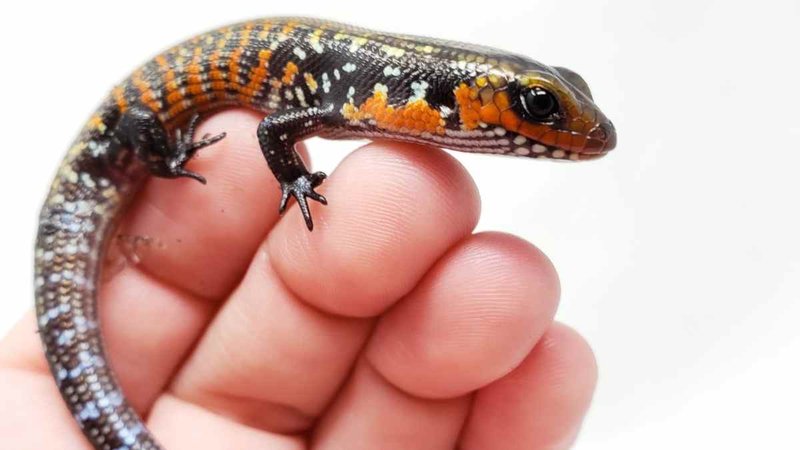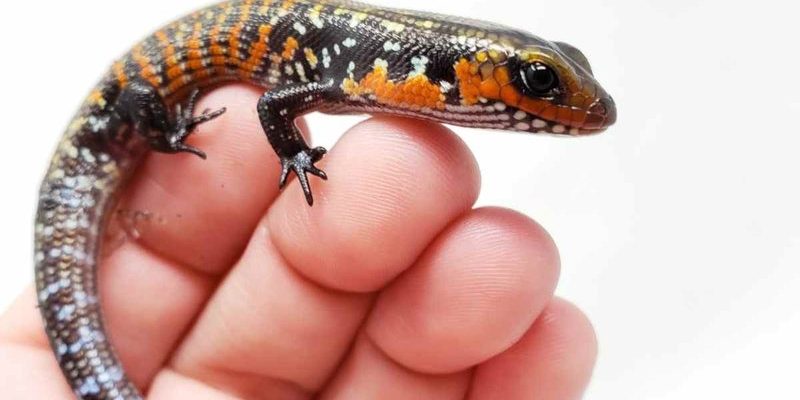
Understanding the evolutionary history of the fire skink is like following a winding river. Just as a river carves its path through landscapes over time, the journey of the fire skink has been shaped by millions of years of environmental changes, genetic mutations, and survival strategies. Let’s dive into this intriguing story, one that sheds light on how species transform and adapt to survive in a changing world.
What is a Fire Skink?
The fire skink is a medium-sized lizard that can grow up to about 10 inches long, but don’t let its size fool you. This little guy sports a striking appearance with bold patterns—often ranging from bright orange to deep red, interrupted by black stripes. Their vivid colors serve multiple purposes; not only do they help in mating displays, but they can also act as camouflage in the dappled light of their forest habitats.
These skinks are primarily insectivorous, which means they feast on a diet made up of insects, but they can also munch on small invertebrates. You might wonder why such a dynamic character is often overlooked. Well, their secretive nature means they tend to hide under leaf litter or inside crevices, making them a little harder to spot compared to other reptiles.
The Origins of the Fire Skink
The evolutionary lineage of the fire skink can be traced back to ancient reptiles that roamed the Earth millions of years ago. To understand where they come from, we need to explore the Scincidae family, a diverse group of lizards commonly known as skinks. These lizards are known for their smooth, shiny scales and elongated bodies.
Research suggests that fire skinks, like other skinks, developed their unique traits over time through processes like natural selection. For instance, their vibrant coloration likely evolved to attract mates or warn predators, showcasing the delicate balance between beauty and survival in nature. In a way, they are a living testament to how life adapts to its environment, continuously shaping its identity.
Habitat and Adaptations
Fire skinks thrive in humid, forested environments across parts of West Africa, particularly in places like Ghana and Nigeria. These habitats play a crucial role in their survival, providing not just food but also shelter from predators and harsh weather conditions.
One key adaptation of the fire skink is its ability to blend into its surroundings. While their bright colors might seem counterproductive, when they rest among vibrant leaves, they can easily go unnoticed by predators. This camouflage is a remarkable example of how creatures evolve to survive in their specific environments.
During the rainy season, fire skinks become more active, hunting for food on the forest floor. Their nocturnal behavior allows them to avoid the heat of the day and evade potential threats—another clever adaptation that speaks to their evolutionary history.
Reproduction and Lifespan
The reproductive habits of fire skinks are equally fascinating. Typically, these lizards are ovoviviparous, which means they give birth to live young instead of laying eggs. This interesting trait offers advantages in their wet, humid habitats—newborn skinks can start foraging for food right away without having to endure the risky early stages of egg development.
Fire skinks have a relatively short lifespan, living up to about 5 to 8 years in the wild. In captivity, with proper care, their lifespan can extend significantly. Their breeding season usually coincides with the rainy months when food is plentiful, ensuring a better chance of survival for their young.
Conservation Status and Threats
While fire skinks are not currently classified as endangered, their habitats face various threats, primarily due to deforestation and habitat destruction. The forests of West Africa are being cleared for agriculture and urban development, putting immense pressure on the delicate ecosystems that these skinks rely on.
Conservation efforts focus on habitat preservation and raising awareness about the importance of these unique reptiles in their ecosystems. By understanding their evolutionary history, we can better appreciate their role in biodiversity and the need to protect their habitats.
Why Understanding Evolution Matters
So, why should we care about the evolutionary history of the fire skink? Here’s the thing: studying these creatures helps us understand broader ecological concepts. It gives us clues about how species adapt to changes in their environment, informing conservation strategies that can help protect not just fire skinks, but countless other species at risk.
When we delve into the lives of animals like the fire skink, we open up a world of learning that teaches us about resilience, adaptation, and the beauty of life on Earth. Just like observing the intricate details of a single leaf can lead to a greater appreciation of an entire forest, understanding these lizards enriches our view of the natural world.
In conclusion, the fire skink’s evolutionary history is a captivating journey that intertwines with the very fabric of its ecosystem. Its story is a reminder of the importance of preserving biodiversity and the intricate connections that bind all living things together. By embracing this knowledge, we can foster a deeper respect for not just the fire skink, but all creatures sharing our planet.

